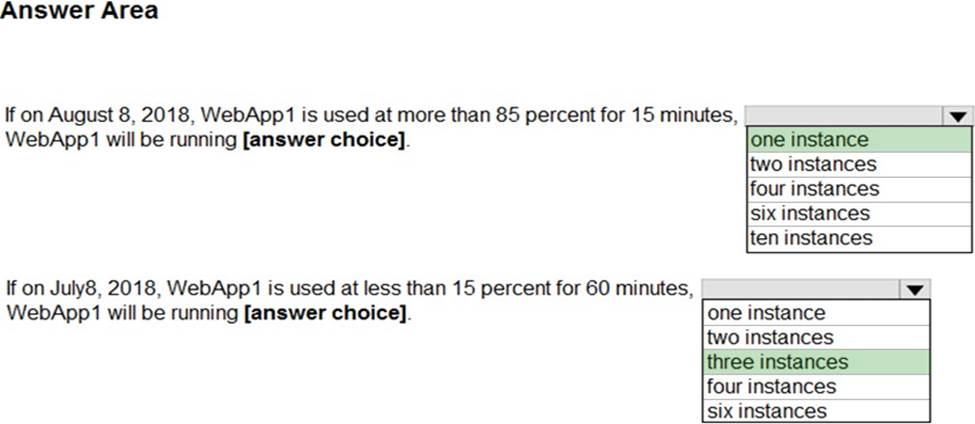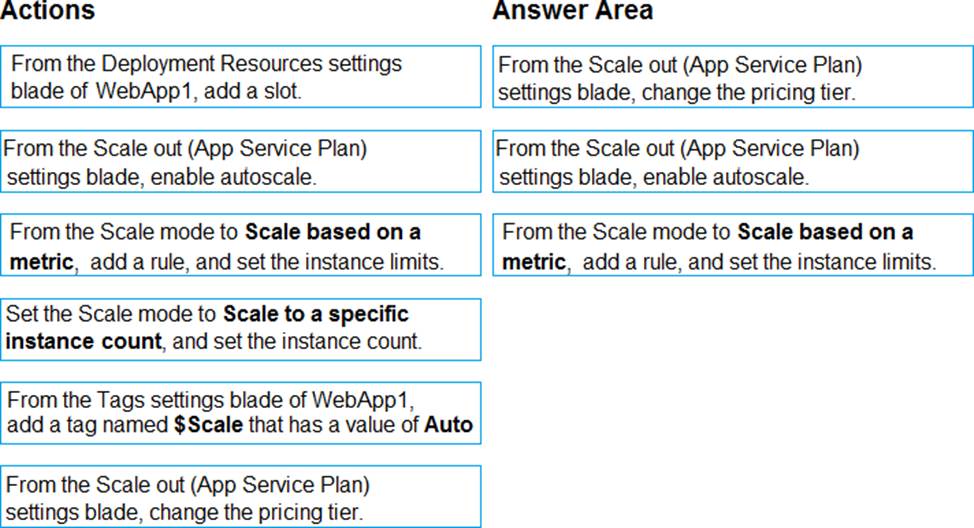Microsoft AZ-101 Microsoft Azure Integration and Security Online Training
Microsoft AZ-101 Online Training
The questions for AZ-101 were last updated at Dec 13,2025.
- Exam Code: AZ-101
- Exam Name: Microsoft Azure Integration and Security
- Certification Provider: Microsoft
- Latest update: Dec 13,2025
Implement and manage application services
Question Set 1
Note: This question is part of a series of questions that present the same scenario. Each questionin the series contains a unique solution that might meet the stated goals. Some question setsmight have more than one correct solution, while others might not have a correct solution.
After you answer a question in this section, you will NOT be able to return to it. As a result, thesequestions will not appear in the review screen.
You have an Azure web app named App1. App1 runs in an Azure App Service plan named Plan1. Plan1 is associated to the Free pricing tier.
You discover that App1 stops each day after running continuously for 60 minutes.
You need to ensure that App1 can run continuously for the entire day.
Solution: You change the pricing tier of Plan1 to Shared.
Does this meet the goal?
- A . Yes
- B . No
HOTSPOT
You create an Azure web app named WebApp1.
WebApp1 has the autoscale settings shown in the following exhibit.
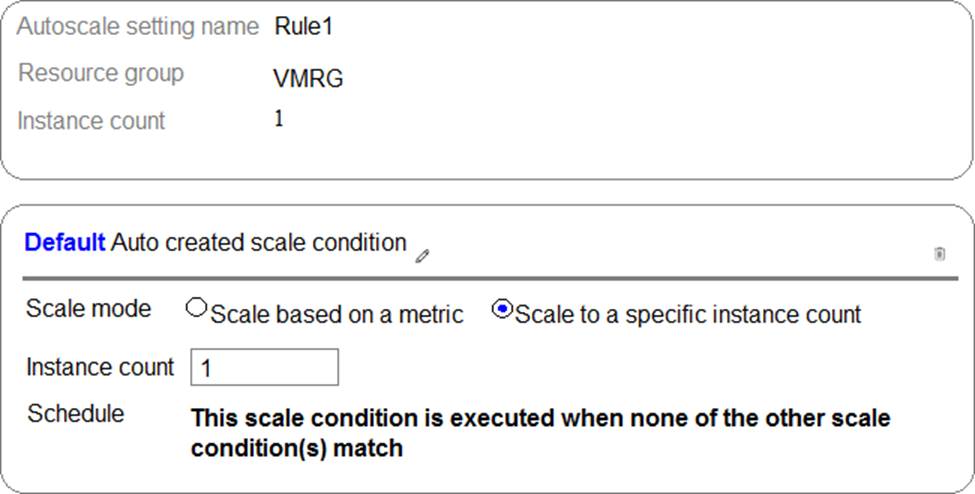
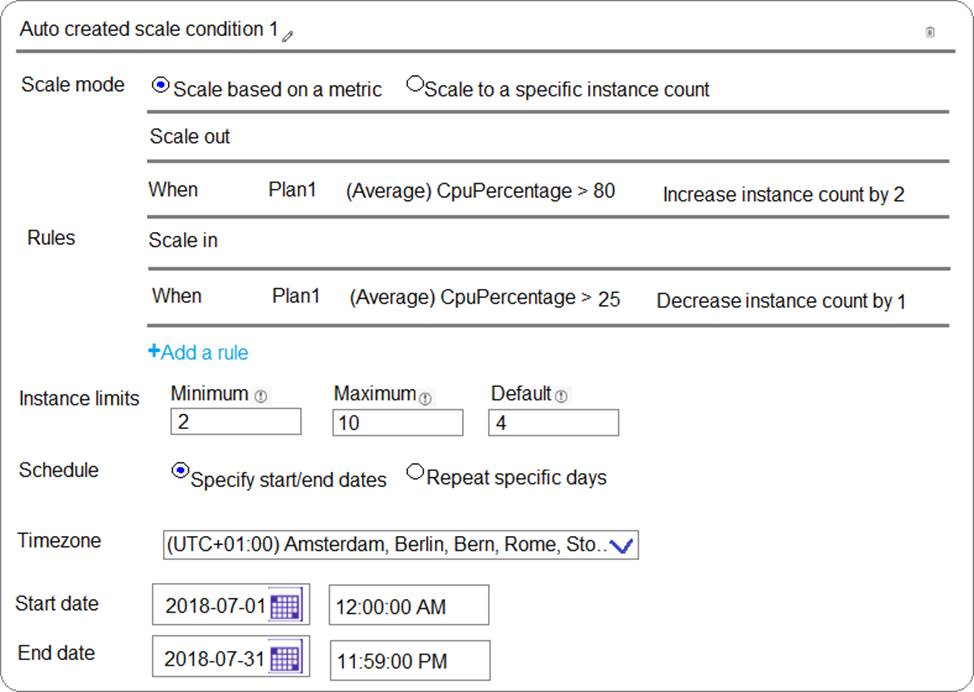
The scale out and scale in rules are configured to have a duration of 10 minutes and a cool down time of
five minutes. Use the drop-down menus to select the answer choice that completes each statement based on the information presented in the graphic.
NOTE: Each correct selection is worth one point.
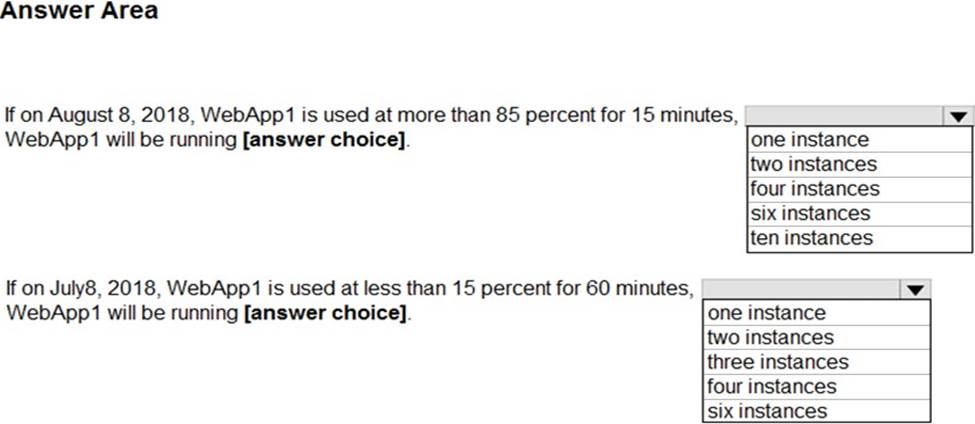
DRAG DROP
You have an Azure subscription that contains an Azure Service Bus named Bus1. Your company plans to deploy two Azure web apps named App1 and App2.
The web apps will create messages that have the following requirements:
– Each message created by App1 must be consumed by only a single consumer
– Each message created by App2 will be consumed by multiple consumers.
Which resource should you create for each web app? To answer, drag the appropriate resources to the correct web apps. Each resource may be used once, more than once, or not at all. You may need to drag the split bar between panes or scroll to view content. NOTE: Each correct selection is worth one point.

DRAG DROP
You are developing an Azure web app named WebApp1. WebApp1 uses an Azure App Service plan named Plan1 that uses the B1 pricing tier.
You need to configure WebApp1 to add additional instances of the app when CPU usage exceeds 70 percent for 10 minutes.
Which three actions should you perform in sequence? To answer, move the appropriate actions from the list of actions to the answer area and arrange them in the correct order.
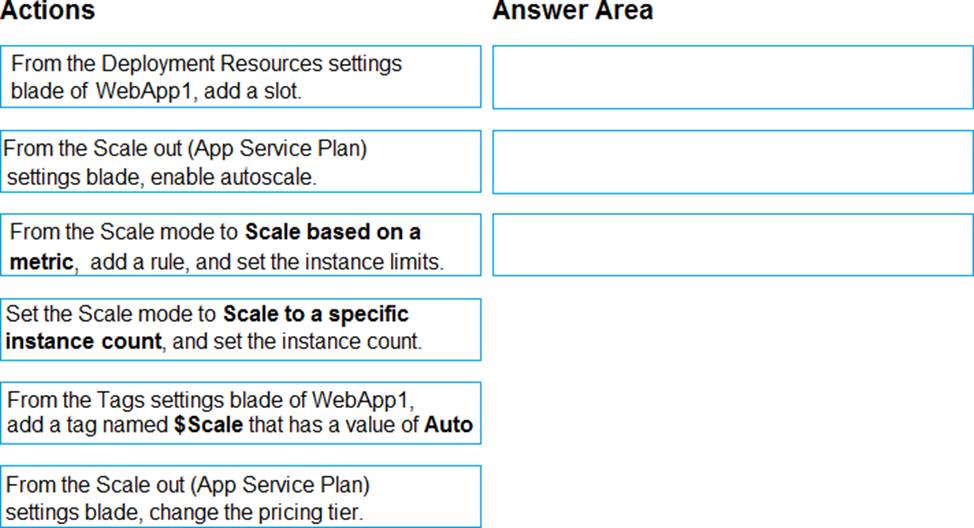
DRAG DROP
You are developing an Azure web app named WebApp1. WebApp1 uses an Azure App Service plan named Plan1 that uses the B1 pricing tier.
You need to configure WebApp1 to add additional instances of the app when CPU usage exceeds 70 percent for 10 minutes.
Which three actions should you perform in sequence? To answer, move the appropriate actions from the list of actions to the answer area and arrange them in the correct order.

DRAG DROP
You are developing an Azure web app named WebApp1. WebApp1 uses an Azure App Service plan named Plan1 that uses the B1 pricing tier.
You need to configure WebApp1 to add additional instances of the app when CPU usage exceeds 70 percent for 10 minutes.
Which three actions should you perform in sequence? To answer, move the appropriate actions from the list of actions to the answer area and arrange them in the correct order.

DRAG DROP
You are developing an Azure web app named WebApp1. WebApp1 uses an Azure App Service plan named Plan1 that uses the B1 pricing tier.
You need to configure WebApp1 to add additional instances of the app when CPU usage exceeds 70 percent for 10 minutes.
Which three actions should you perform in sequence? To answer, move the appropriate actions from the list of actions to the answer area and arrange them in the correct order.

DRAG DROP
You are developing an Azure web app named WebApp1. WebApp1 uses an Azure App Service plan named Plan1 that uses the B1 pricing tier.
You need to configure WebApp1 to add additional instances of the app when CPU usage exceeds 70 percent for 10 minutes.
Which three actions should you perform in sequence? To answer, move the appropriate actions from the list of actions to the answer area and arrange them in the correct order.

Note: This question is part of a series of questions that present the same scenario. Each questionin the series contains a unique solution that might meet the stated goals. Some question setsmight have more than one correct solution, while others might not have a correct solution.
After you answer a question in this section, you will NOT be able to return to it. As a result, thesequestions will not appear in the review screen.
You have an Azure Active Directory (Azure AD) tenant named Adatum and an Azure Subscription named Subscription1. Adatum contains a group named Developers. Subscription1 contains a resource group named Dev.
You need to provide the Developers group with the ability to create Azure logic apps in the Dev resource group.
Solution: On Dev, you assign the Logic App Contributor role to the Developers group.
Does this meet the goal?
- A . Yes
- B . No
You are building a custom Azure function app to connect to Azure Event Grid.
You need to ensure that resources are allocated dynamically to the function app. Billing must be based on the executions of the app.
What should you configure when you create the function app?
- A . the Windows operating system and the Consumption plan hosting plan
- B . the Windows operating system and the App Service plan hosting plan
- C . the Docker container and an App Service plan that uses the B1 pricing tier
- D . the Docker container and an App Service plan that uses the S1 pricing tier
Latest AZ-101 Dumps Valid Version with 102 Q&As
Latest And Valid Q&A | Instant Download | Once Fail, Full Refund

